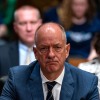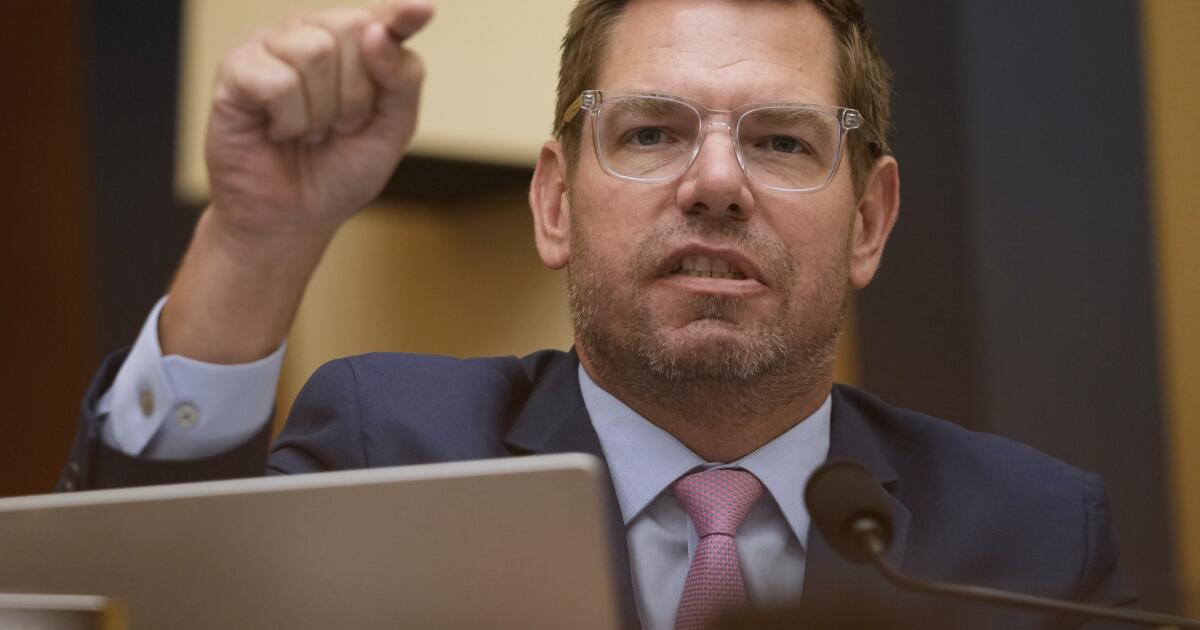News
C.I.A. Now Favors Lab Leak Theory to Explain Covid’s Origins

The C.I.A. has said for years that it did not have enough information to conclude whether the Covid pandemic emerged naturally from a wet market in Wuhan, China, or from an accidental leak at a research lab there.
But the agency issued a new assessment this week, with analysts saying they now favor the lab theory.
That shift is based on “the available body of reporting,” although the other theory remains plausible, a spokeswoman for the agency said, adding that the agency will continue to evaluate any available credible new intelligence reporting.
Some American officials say the debate matters little: The Chinese government failed to either regulate its markets or oversee its labs. But others argue it is an important intelligence and scientific question.
John Ratcliffe, the new director of the C.I.A., has long favored the lab leak hypothesis. He has said it is a critical piece of intelligence that needs to be understood and that it has consequences for U.S.-Chinese relations.
The announcement of the shift came shortly after Mr. Ratcliffe told Breitbart News he no longer wanted the agency “on the sidelines” of the debate over the origins of the Covid pandemic. Mr. Ratcliffe has long said he believes that the virus most likely emerged from the Wuhan Institute of Virology.
Officials said the agency was not bending its views to a new boss, and that the new assessment had been in the works for some time.
In the final weeks of the Biden administration, Jake Sullivan, the national security adviser, ordered a new classified review of the pandemic’s origin. As part of that review, the agency’s previous director, William J. Burns, told analysts that they needed to take a position on the origins of Covid, though he was agnostic on which theory they should embrace, a senior U.S. intelligence official said.
Another senior U.S. official said it was Mr. Ratcliffe’s decision to declassify and release the new analysis.
There is no new intelligence behind the agency’s shift. Rather it is based on the same evidence it has been chewing over for months.
The analysis, however, is based in part on a closer look at the conditions in the high security labs in Wuhan province before the pandemic outbreak, according to people familiar with the agency’s work.
Since the outbreak of the pandemic, questions have swirled around whether the two labs handling coronaviruses in Wuhan had followed safety protocols strictly enough.
The agency made its new assessment with “low confidence,” which means the intelligence behind it is fragmentary and contradictory.
Even in the absence of hard intelligence, the lab leak hypothesis has been gaining ground inside spy agencies. But some analysts question the wisdom of shifting a position in absence of new information.
Former officials say they are not averse to a new examination of the Covid origins intelligence by the Trump administration. President Biden ordered a new review of the intelligence early in his administration after officials told the White House they had still-unexamined evidence.
Mr. Ratcliffe has raised questions about politicization in the intelligence agencies. Mr. Ratcliffe, who was the director of national intelligence in the first Trump administration, argued in an essay for Fox News in 2023 that the C.I.A. did not want to embrace the lab leak to avoid geopolitical problems for the Biden administration.
“The real problem is, the only assessment the agency could make — which is that a virus that killed over a million Americans originated in a C.C.P.-controlled lab whose research included work for the Chinese military — has enormous geopolitical implications that the Biden administration does not want to face head-on,” he said in the piece, which was written with Cliff Sims, a top aide. C.C.P. refers to China’s Communist Party.
Mr. Ratcliffe said on Thursday, when he was sworn in, that a look at the origins of Covid was a “Day 1” priority.
“I think our intelligence, our science and our common sense all really dictate that the origins of Covid was a leak at the Wuhan Institute of Virology,” he told Breitbart. “But the C.I.A. has not made that assessment or at least not made that assessment publicly. So I’m going to focus on that and look at the intelligence and make sure that the public is aware that the agency is going to get off the sidelines.”
Senior intelligence officials in the Biden administration defend their process and methodology. They have said that no intelligence was suppressed and insist that politics did not play into their analysis.
These officials say that there are powerful logical arguments for both the lab leak and the natural causes theories, but that there simply is no decisive piece of intelligence on either side of the issue.
To boost the natural origins theory, intelligence officers would like to find the animal that passed it to a human or find a bat carrying what was the likely ancestor of the coronavirus that causes Covid.
Similarly, to seal the lab leak, the intelligence community would like to find evidence that one of the labs in Wuhan was working on a progenitor virus that directly led to the epidemic.
Neither piece of evidence has been found.
But Mr. Ratcliffe has promised a more aggressive C.I.A., and it is possible that he will order more actions to penetrate the labs in Wuhan or the Chinese government in a search for information.
It will not be an easy secret to steal. The senior ranks of the Chinese government do not know, and do not want to know, American officials have said. So if there is intelligence, it is probably hidden in a place that is hard to get to.
Intelligence officials interviewed in recent weeks say it is possible that such a piece of evidence exists in a lab in China, at least in theory. But, they said, it is still more likely that the answers to questions surrounding the virus’s origins will come through a scientific breakthrough, not an intelligence revelation.
Under the Biden administration, the intelligence community leaned toward the theory that the virus came from the market. But officials readily admitted it was hardly a sure thing.
Five agencies, including the National Intelligence Council and the Defense Intelligence Agency, assessed that natural exposure most likely caused the epidemic. But they said that they had only low-confidence in their assessment.
Until now, two agencies, the F.B.I. and Department of Energy, thought a lab leak was more likely. But their theories are different. The F.B.I. believes the virus came from the Wuhan Institute of Virology. The Energy Department put its bet on another lab, the Wuhan Center for Disease Control.
Officials would not say if the C.I.A. believes one lab or the other was the more likely source of the virus.

News
Speaker Johnson pleads with Republicans to keep concerns private after tumultuous week
Washington (AP) — House Speaker Mike Johnson is imploring his fellow Republicans to stop venting their frustrations in public and bring their complaints to him directly.
“They’re going to get upset about things. That’s part of the process,” Johnson told reporters Thursday. “It doesn’t bother me. But when there is a conflict or concern, I always ask all members to come to me, don’t go to social media.”
Increasingly, they’re ignoring him.
Cracks inside the GOP conference were stark this week as a member of Johnson’s own leadership team openly accused him of lying, rank-and-file Republicans acted unilaterally to force votes and a leadership-backed bill faltered. It’s all underscored by growing worries that the party is on a path towards losing the majority next year.
“I certainly think that the current leadership and specifically the speaker needs to change the way that he approaches the job,” GOP Rep. Kevin Kiley of California said Thursday.
Kiley, who has grown vocally critical of Johnson after the GOP’s nationwide redistricting campaign backfired in California, said the speaker has been critical of rank-and-file Republicans, so “he needs to be prepared to accept any criticism that comes with the job.”
“And I think, unfortunately, there’s been ample reason for criticism,” he added.
GOP lawmaker asks, ‘Why do we have to legislate by discharge petitions?’
For the first part of 2025, Johnson held together his slim Republican majority in the House to pass a number of President Donald Trump’s priorities, including his massive spending and tax cut plan.
But after Johnson kept members out of session for nearly two months during the government shutdown, they returned anxious to work on priorities that had been backlogged for months — and with the reality that their time in the majority may be running out.
First was a high-profile discharge petition to force the vote on releasing the Jeffrey Epstein files, which succeeded after it reached the 218-signature threshold. Other lawmakers are launching more petitions, a step that used to be considered a major affront to party leadership.
“The discharge petition, I think, always shows a bit of frustration,” said GOP Rep. Dusty Johnson of South Dakota.
Another discharge petition on a bill that would repeal Trump’s executive order to end collective bargaining with federal labor unions reached the signature threshold last month, with support from seven Republicans.
And this week, GOP Rep. Anna Paulina Luna of Florida brought a long-anticipated discharge petition for a bill to bar members of Congress from trading stock. A number of Republicans have already signed on, in addition to Democrats.
“Anxious is what happens when you get nervous. I’m not nervous. I’m pissed,” Luna wrote on social media late Thursday, responding to leadership comments that she was overly anxious.
GOP Rep. Nancy Mace of South Carolina signed both Luna’s petition and the one to release the Epstein files. She told reporters Thursday that she expressed her frustrations directly to Johnson in a phone call, and in what she described as “a deeply personal, deeply passionate letter, that we are legislating by discharge petition.”
“We have a very slim majority, but I want President Trump’s executive orders codified,” Mace said. “I want to see his agenda implemented. Why do we have to legislate by discharge petitions?”
Speaker Johnson’s own leadership team is going after him
At the center of Johnson’s pleas for members to bring concerns to him privately instead of on social media is the chairwoman of House Republican leadership, New York Rep. Elise Stefanik.
Angered that a provision she championed wasn’t included in a defense authorization bill, Stefanik blasted Johnson’s claims that he wasn’t aware of the provision as “more lies from the Speaker.” She conducted a series of media interviews criticizing Johnson, including one with The Wall Street Journal in which she said he was a “political novice” who wouldn’t be reelected speaker if the vote were held today.
Johnson told reporters Thursday that he had a “great talk” with Stefanik the night before.
“I called her and I said, ‘Why wouldn’t you just come to me, you know?’” Johnson said. “So we had some intense fellowship about that.”
Asked if she had apologized for calling him a liar, Johnson said, “Um, you ask Elise about that.”
Illinois Rep. Mary Miller released a statement Thursday providing support for Johnson, saying that while there are differences among members “our mission is bigger than any one individual or headline.”
Democrats, who have had leadership criticisms of their own, have reveled in the GOP’s disarray. House Republican leaders attempted to muscle through an NCAA-backed bill to regulate college sports after the White House endorsed it, before support within Republican ranks crumbled. Some GOP lawmakers pointedly said they had bigger priorities before the end of the year.
“It’s not that Congress can’t legislate, it’s House Republicans that can’t legislate. It’s the gang that can’t legislate straight. They continue to take the ‘my way or the highway’ approach,” said House Democratic Leader Hakeem Jeffries.
There is underlying GOP unease about losing the chamber in 2026
All eyes in the U.S. House were on a special election Tuesday night in a Tennessee district that a Republican had won in 2024 by nearly 21 percentage points, with Trump carrying the area by a similar margin.
Republicans hoped the contest would help them regain momentum after losing several marquee races across the country in November. Democrats, meanwhile, argued that keeping the race close would signal strong political winds at their backs ahead of next year’s midterms, which will determine control of both chambers.
Republican Matt Van Epps ultimately won by nearly 9 percentage points.
“I do think to have that district that went by over 20 points a year ago be down to nine, it should be a wakeup call,” said GOP Rep. Don Bacon of Nebraska.
He argued that Republicans need “to get some economic progress, like immediately,” adding that “the president and his team have got to come to grips” that tariffs are not driving economic growth.
“I just feel like they’re going to have to get out of their bubble,” Bacon said of the White House. “Get out of your bubble. The economy needs improving. Fix Ukraine and we do need a temporary health care fix.”
Bacon is among a growing number of House Republicans who have announced they will retire after this term. Republican Rep. Marjorie Taylor Greene of Georgia abruptly declared last month that she would resign in January, citing multiple reasons, including that “the legislature has been mostly sidelined” this year.
Those retirements add to the GOP’s challenge in holding the House, as the party must now defend more open seats. Republicans have also seen a redistricting battle — sparked by Trump’s pressure on Texas Republicans and then more states — backfire in part. In November, California voters handed Democrats a victory by approving a new congressional map.
“That’s living in a fantasy world if you think that this redistricting war is what’s going to save the majority,” said Kiley, now at risk of losing his seat after redistricting in California.
He added, “I think what would make a lot bigger impact is if the House played a proactive role in actually putting forward legislation that matters.”
___
Associated Press reporter Meg Kinnard in Columbia, South Carolina, contributed to this report.
News
Video: New Footage Shows Epstein’s Private Island Home

new video loaded: New Footage Shows Epstein’s Private Island Home
By Shawn Paik
December 4, 2025
News
U.S. health care is broken. Here are 3 ways it’s getting worse

MINNETONKA, MINN.: Flags fly at half mast outside the United Healthcare corporate headquarters on Dec. 4, 2024, after CEO Brian Thompson was shot dead on a street in New York City. The shocking act of violence sparked a widespread consumer outcry over U.S. health care costs and denied claims.
Stephen Maturen/Getty Images/Getty Images North America
hide caption
toggle caption
Stephen Maturen/Getty Images/Getty Images North America
One year after UnitedHealthcare’s CEO was shot and killed, the crisis in U.S. health care has gotten even worse — in ways both obvious and hidden.

People increasingly can’t afford health insurance. The costs of both Obamacare and employer-sponsored insurance plans are set to skyrocket next year, in a country where health care is already the most expensive in the developed world.
Yet even as costs surge, the companies and the investors who profit from this business are also struggling financially. Shares in UnitedHealth Group, the giant conglomerate that owns UnitedHealthcare and that plays a key role in the larger stock market, have plunged 44% from a year earlier. (It was even worse before a rally in UnitedHealth shares on Wednesday.)
“UnitedHealth’s reputation in the investment community, before December 4 last year, was [as] a safe place to put your money. And that basically got all blown up,” says Julie Utterback, a senior equity analyst who covers health care companies for Morningstar.
Then, on Dec. 4, 2024, United Healthcare CEO Brian Thompson was shot on a Manhattan street on his way to an investor event. The shocking act of violence sparked a widespread consumer outcry over U.S. health care costs and denied claims, and plunged UnitedHealth Group into a public relations disaster.


But that was only the start of the business woes for the company and its entire industry — which are facing regulatory scrutiny, tightening margins, and investor skepticism. Many of UnitedHealth’s top competitors have also seen their shares suffer in the past year, at a time when the stock market in general has been hitting tech-driven record highs. The S&P 500’s healthcare index has lagged the larger market. And some Wall Street analysts are bracing for another rocky year in the business of health care.
“Near term, there’s a lot more volatility to come,” says Michael Ha, a senior equity research analyst who covers health care companies for investment bank Baird.
Dec. 4 started to reveal the depth of U.S. health care problems
This wide-ranging crisis for both consumers and businesses underlines the brokenness of the U.S. health care system: When neither the people it’s supposed to serve nor the people making money from it are happy, does it work at all?
“We’re really at an inflection point,” says Katherine Hempstead, a senior policy officer at the Robert Wood Johnson Foundation and the author of a book about the insurance industry.
“Every segment of the health insurance business right now is stressed,” she adds.
These stresses became brutally visible a year ago — and persist today. Luigi Mangione, the 27-year-old suspect in Thompson’s killing, was in court this week for hearings ahead of his trial.
But the crisis in U.S. health care is much bigger than his case. Here are three main ways it’s playing out this year, from Main Street to Wall Street.
Prices are going up — and people are getting ready to go without medical care
No matter how you get your health insurance, it will likely cost more next year.
For the roughly 24 million people who get their insurance through the government’s health care exchanges, Affordable Care Act subsidies are set to expire at the end of the year — sending premiums soaring. Another 154 million people are insured through their employers — and premiums for those plans are also set to skyrocket.

Costs are increasing for several reasons: Drug companies have developed more effective cancer treatments and weight-loss drugs — which they can charge more for. More people are going back to the doctor after the pandemic kept them away, which is creating more demand and allowing providers and hospitals to increase prices. And some hospitals, doctors’ offices, insurance companies and other businesses within the health care system have merged or consolidated, often allowing the remaining businesses to raise prices for their services.
The end result is that nearly half of U.S. adults expect they won’t be able to afford necessary health care next year, according to a Gallup poll published last month.
Jennifer Blazis and her family are among them.
“It just always blows me away, how much I have to consider cost when something happens with the kids,” the 44-year-old nonprofit worker and mother of four told NPR this fall in an interview for its Cost of Living series.

Blazis and her family live in Colorado Springs and get their insurance through her husband’s small property-management business. She says she’s postponing leg surgery that would address a condition that’s causing her pain, but which her doctors say is not yet urgent.
“We wait to go to the doctor because we know if we do, we’re going to get hit with just a massive bill,” Blazis says. “And this is with … a really good health insurance plan that our [family] company pays a ton of money for.”
Yet even the biggest businesses selling these services are struggling
Some of those increased costs are also hitting insurers — even the ones that also control other parts of the health care ecosystem.
UnitedHealth Group is far more than just the owner of the largest U.S. health insurance company. It’s one of the largest companies in the world, and it’s involved in almost every part of how Americans access health care — from employing or overseeing 10% of the doctors they see to processing about 20% of the prescriptions they fill.


It’s also one of the most influential stocks on Wall Street. UnitedHealth Group is one of 30 companies that makes up the blue-chip Dow Jones Industrial Average — so what happens with its shares helps determine what happens with the overall stock market.
The company has had a miserable year on both fronts. The reasons come down to profits, more than PR: UnitedHealth and its competitors have been facing rising costs in the Medicare Advantage businesses that allow private insurers to collect government payments for managing the care of seniors.
These programs were once widely seen as money-makers for big health insurers – but now they’ve gotten UnitedHealth embroiled in financial and regulatory trouble, including a Department of Justice investigation into its Medicare business. The company abruptly replaced its CEO in May, a few months before it acknowledged that it was facing the government probe.
Now UnitedHealth is trying to get rid of about 1 million Medicare Advantage patients — and otherwise move on from the past year’s many problems.
“We want to show that we can get back to the swagger the company once had,” Wayne DeVeydt, UnitedHealth’s chief financial officer, told investors last month.
One prominent investor is betting it can: In August, Warren Buffett’s Berkshire Hathaway disclosed that it had bought more than 5 million shares in UnitedHealth Group. The news helped lift the stock from its depths — but it still has a long way to go for both its share price and its profits to recover from this year’s slump.
Chief Executive Stephen Hemsley acknowledged as much in October, promising investors “higher and sustainable, double-digit growth beginning in 2027 and advancing from there.”
Spokespeople for UnitedHealth declined to comment for this story.
Wall Street used to think health care was safe. It’s waiting for a turnaround
Health care spending accounts for about a fifth of the U.S. economy, making the for-profit companies that earn this money some of the most powerful in the world.
That’s helped their appeal to investors, who traditionally tend to consider health care stocks “defensive,” or safe, investments. That appeal sometimes overrides the industry’s current financial challenges: In the past month, as Wall Street had its now-quarterly panic over the artificial intelligence bubble, health care stocks actually outperformed the broader market for a few weeks.
Still, health care is massively lagging the market in the long term.
Morningstar’s Utterback is optimistic that the industry can eventually turn around its deeper financial, regulatory, and reputational problems. She even calls most health care stocks “undervalued” currently — but she warns that investors will have to have a lot of patience if they want to see bets on the sector pay off.
“My explicit forecast period is 10 years. It’s not three,” she says. “There’s a murky outlook here for the next couple years, at least.”
-

 News2 days ago
News2 days agoTrump threatens strikes on any country he claims makes drugs for US
-

 Politics2 days ago
Politics2 days agoTrump rips Somali community as federal agents reportedly eye Minnesota enforcement sweep
-

 World2 days ago
World2 days agoHonduras election council member accuses colleague of ‘intimidation’
-

 Technology1 week ago
Technology1 week agoNew scam sends fake Microsoft 365 login pages
-

 Politics1 week ago
Politics1 week agoRep. Swalwell’s suit alleges abuse of power, adds to scrutiny of Trump official’s mortgage probes
-

 Business1 week ago
Business1 week agoStruggling Six Flags names new CEO. What does that mean for Knott’s and Magic Mountain?
-

 Ohio1 week ago
Ohio1 week agoSnow set to surge across Northeast Ohio, threatening Thanksgiving travel
-

 News1 week ago
News1 week ago2 National Guard members wounded in ‘targeted’ attack in D.C., authorities say






















